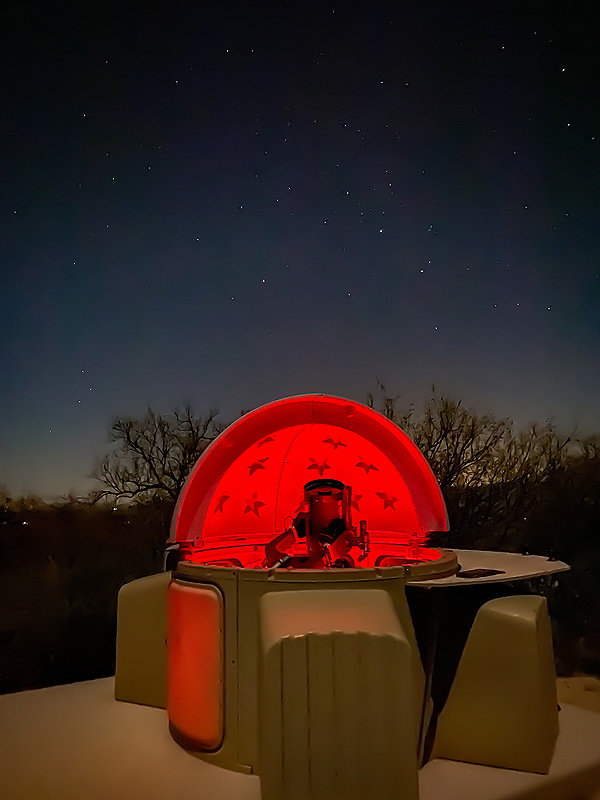Short Session of iPhone Moon Imaging
Posted: 7 January 2020
Monday, 6 January 2020, before heading out to the observatory I participated in a "Mega-Constellations and the Dark Sky Movement" webinar hosted by the International Dark-Sky Association (IDA). I then watched the SpaceX Starlink batch 3 launch online.
|
Open: Monday, 6 January 2020, 1933 MST Temperature: 54°F |
Session: 1421 Conditions: Clear |
Equipment:
12" f/8 LX600 w/StarLock
2" 24mm UWA eyepiece
Camera:
iPhone 11 Pro Max
1937 MST: LX600 ON, StarLock OFF, High Precision OFF.
Viewed the waxing gibbous Moon, 102X.
Handheld the iPhone 11 Pro Max over the 2" 24mm UWA eyepiece for this afocal 102X photo of the Moon taken with the iOS app NightCap Camera (ISO 32, 1/1000sec, 1X normal lens).

Switched to using the 2X telephoto lens for these handheld afocal 102X NightCap Camera photos along the lunar terminator.
North (ISO 21, 1/125sec)

North (ISO 21, 1/250sec)

I did some more lunar observing, 102X.
I stepped outside of the observatory and took this handheld iPhone 11 Pro Max photo of the moonlit observatory and some stars using the iOS Camera app (Night Mode).

I returned to the observatory and viewed M42 (the Great Nebula in Orion), 102X. Some nebulosity was visible against the bright moonlit sky. The Trapzium star cluster was very nice.
Then viewed the star Betelgeuse in Orion, 102X. As it is currently much fainter than normal its orangish color really stood out.
Next, viewed the double star Castor in Gemini, 102X. Nice view. That was followed by the double star Rigel in Orion, 102X. Rigel's faint companion star was nicely visible.
2010 MST: LX600 OFF.
|
Close: Monday, 6 January 2020, 2017 MST Temperature: 50°F |
Session Length: 0h 44m Conditions: Clear |
Comments are welcome using Email. Twitter users can use the button below to tweet this report to their followers. Thanks.
Cassiopeia Observatory Home Page
Copyright ©2020 Michael L. Weasner / mweasner@me.com
URL = http://www.weasner.com/co/Reports/2020/01/07/index.html
